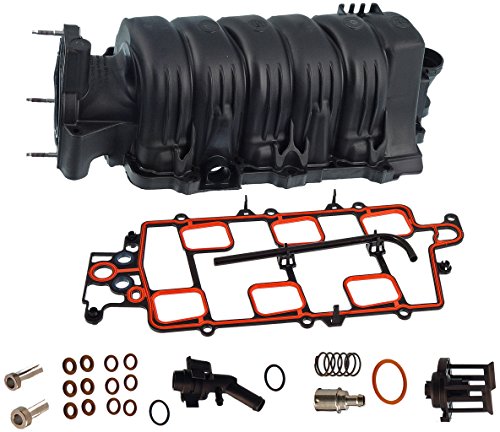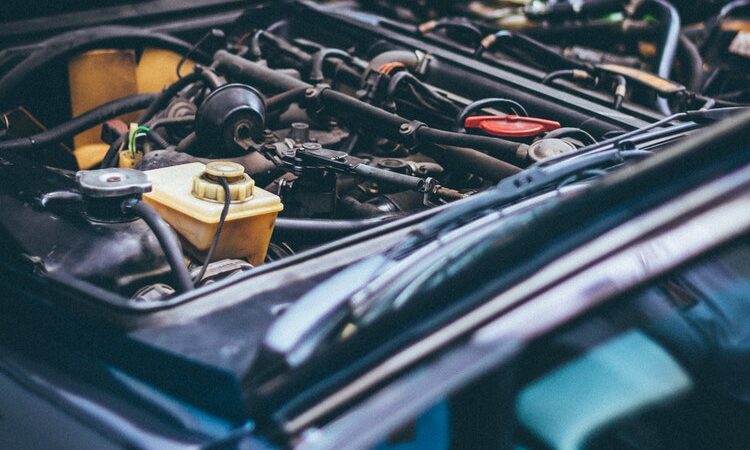Intake Manifold Gasket Leak Symptoms

Generally speaking, this is a rare issue within cars, however it does happen more often than we expect and therefore it is something that once diagnosed does require immediate proper attention.
If we compare the car system with our respiratory system, the engine would be the lungs in which the oxygen enters to create explosions in the cylinders. The manifold acts like the trachea would be the main engines intake source of oxygen, as well as it’s coolant provider.
Because the manifold gasket is made out of rubber, like any other plastic, the car’s inner heat waves tend to strain the gasket, causing it to get cracked due to constant contraction and expansion.
This eventually causes coolant and air leaks that can potentially overheat and suffocate your car’s engine. That’s why it i

s important for you to detect the early symptoms so that you can take your car to a mechanic and have it properly diagnosed and fixed.
Main Symptoms
There are five symptoms you can look for to suspect issues related to a manifold gasket leakage.
#1 Engine overheats and reports high temperature
Here are the signs to check for:
- The gauge temp. lecture indicates high temperatures.
- The gauge arrow marks the “danger zone” or points close without driving too far.
- A burnt rubber smell can be detected within a few minutes of turning on the engine
- Smoke or vapor tends to come out of your engine (this happens in late stages of the problem)
- Slight bubbling and spluttering noises can be heard
#2 Engine Stops His Well Performance
When the manifold gasket cracks or leaks a lot of air gets sucked in, and gas capacity is reduced, as a result, the engine starts decreasing performance because of weaker explosions produced.
The main signs of this happening are:
- The car doesn’t accelerate as much or as fast as it should
- The car idles way too fast or even stalls
- Slight popping sounds can be heard
#3 You Run Out of Gas More Quickly
This happens due to the weaker inner explosions and the weakening of the engine’s power which causes more fuel to be used in order to keep running.
As this is a cumulative symptom, you might not notice it right away, however as the time goes by, the gasket crack will get worse so that the engine performance will decline gradually.
Also, if your car happens to have an average consumption display, this might unmask the problem earlier because of the consumption going way off track.
However an increase in fuel consumption is not exclusive to a manifold gasket leak, badly inflated tires and wheel misalignment along with other engine issues can cause fuel consumption to increase. So, to make sure this is caused by a cracked manifold gasket you need to look for any air leaks.
#4 Coolant Stains on The Pavement
Your car will leave an oily puddle underneath. However, you need to make sure that the oil leaking is coolant indeed, as coolants come in a variety of colors that makes them more difficult to detect.
A coolant organoleptic characteristic is:
- Oily feel (like shampoo or soap)
- Sweetish smell
If you happen to have some coolant leftover you can spill some close to the puddle and see if they look the same.
Furthermore, when you manage to identify the coolant, the next step is to identify the leaking source, as the coolant might leak from the radiator or the rubber pipes.
#5 Vacuum Air Leaks
This causes the engine performance to drop, therefore it is important that you look for the following while searching for air spills.
- Search through all the rubber hoses and fittings leading to your engine and look for cracks or tears.
- If nothing is found, it’s time to test the gasket by following the next method.
- Start the car and let it idle for a while. Look for odd sounds.
- Take some carburetor cleaner and spray it where the intake manifold is attached to the engine.
- Listen carefully while spraying. Notice if the car idles faster, almost as if it is becoming smoother. If any of that happens, then you know the gasket is damaged.
What’s Next
If your car happens to have very small leaks, these can be fixed at home, however these fixes shouldn’t serve as permanent fixes, therefore if the problem persists, the best you can do is to replace the gasket right away.
Get professional help as in this particular case a level of expertise is required to identify the problem. Choose the right gasket, remove the intake manifold from the engine and replace the gasket without any leaks.
If you happen to have more questions please visit our website for more information.





